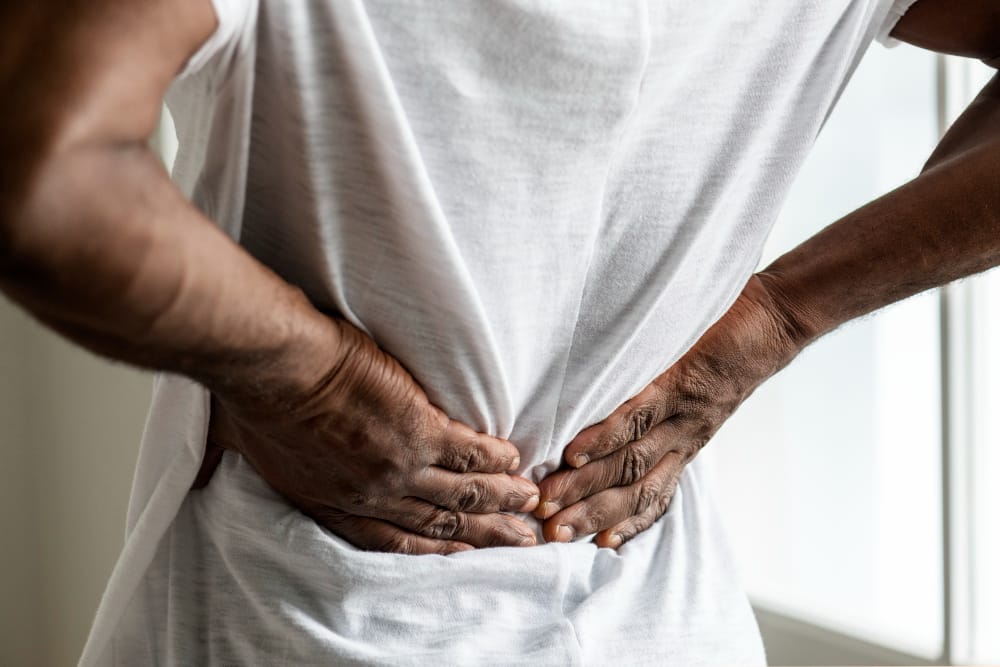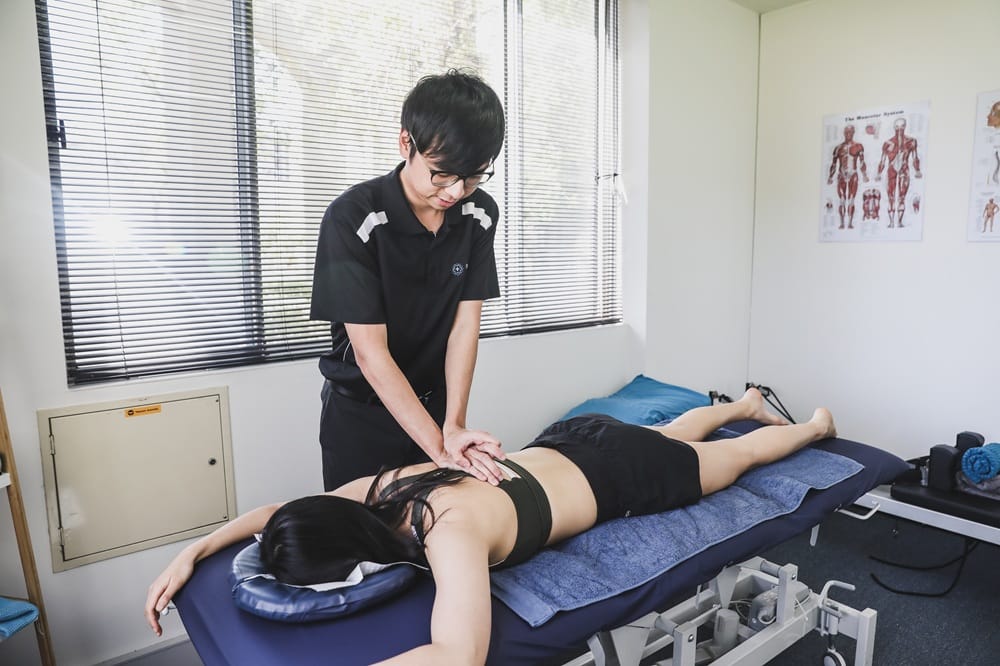
Lower back pain can make everyday life feel harder than it should. Getting out of bed, sitting at your desk, or perhaps simply even going for a walk. It all starts to feel like a challenge.
You’re not imagining it. And you’re certainly not alone.
This kind of pain is incredibly common, but the reasons behind it aren’t always simple. For some people, it’s muscle tension. For others, it might be stiff joints, an old injury flaring up, or just too much time spent sitting.
Understanding what’s really going on is the first step toward getting better. In this guide, we’ll walk you through the most common reasons for lower back pain and what you can do about it.
The complexity of back pain
When clients visit our South Perth clinic with lower back pain, one of the first questions they ask is, “What’s causing it?” The answer isn’t always straightforward.
In many cases, it’s not just one issue. It might be muscle tension, joint stiffness, or how the body has been moving (or not moving) over time. Sometimes it follows an injury. Other times, it builds up slowly without a clear trigger.
In our experience, lower back pain often involves a mix of things. There may be tight muscles that need release, along with joints that aren’t moving as well as they should. That’s why we don’t rely on one type of treatment. We look at the whole picture so we can treat it properly and help prevent it from coming back.
Muscular causes of lower back pain
Muscle strain is one of the most frequent causes of lower back pain. It can come on suddenly or build up over time. Here’s what we often see:
What causes muscle-related back pain?
- Heavy lifting, lifting awkwardly or using poor technique
- Sitting for long periods, especially with poor posture
- Repetitive movements at work or during sport / physical activity
- General muscle fatigue or weakness, often from lack of movement
- Stress, anxiety and life pressure (more common in jaw and shoulders but can affect the back)
What does it feel like?
- A dull ache or stiffness in the lower back
- Sharp pain when bending, twisting or lifting
- Muscle tightness that worsens at the end of the day
- Sudden muscle spasms that restrict movement
Why does it happen?
When your muscles are under too much strain—or aren’t getting the support they need from surrounding joints—they work overtime. This tension can lead to pain, restricted movement, or even protective spasms.
At Integrity Physiotherapy, we often treat this type of pain with:
- Massage or soft tissue release
-
- Dry needling (when appropriate)
- Stretching and gentle movement advice
These techniques help calm the area down, improve mobility, and reduce pain, especially in the early stages of treatment.
Structural causes of lower back pain
Not all lower back pain is muscular. In some cases, the issue lies deeper within the joints, discs, or bones of the spine. These structural causes can lead to pain, stiffness, and sometimes nerve irritation.
What types of structural issues cause pain?
- Degenerative disc disease – Discs lose height and hydration with age, reducing their shock-absorbing ability
- Herniated or bulging discs – A disc may press on nearby nerves, causing local or radiating pain
- Osteoarthritis – Wear and tear in the joints of the spine can lead to stiffness and inflammation
- Spinal stenosis – Narrowing of the spinal canal can compress nerves, leading to pain, tingling or weakness
- Spondylolisthesis – One vertebra slips forward over the one below it, sometimes causing instability and pain
- Scoliosis – An abnormal curve in the spine that can lead to uneven pressure and discomfort
What does it feel like?
- Aching or sharp pain in the lower back
- Pain that worsens with standing or walking
- Stiffness in the morning or after rest
- Pain that radiates down the leg (if nerves are affected)
- Reduced mobility or confidence when moving
How physiotherapy can help
Although structural conditions can sound serious, many respond well to conservative care. At Integrity Physiotherapy, we tailor treatment to your condition and symptoms. This might include:
- Joint mobilisation to improve movement and reduce discomfort
- Targeted strengthening to support the spine and offload affected joints
- Education and pacing strategies to help manage flare-ups
Our goal is to reduce pain and improve your ability to move safely and confidently.
Nerve involvement
Sometimes, lower back pain isn’t just in the back. If a nerve is irritated or compressed, the pain can travel down into the hips, legs or even the feet. This is common with conditions such as sciatica and spinal stenosis.
What causes nerve-related back pain?
- Herniated or bulging discs pressing on nearby nerves
- Spinal stenosis, which narrows the space for the spinal cord and nerves
- Spondylolisthesis, where a vertebra slips and affects nerve roots
- Inflammation or swelling around the joints or discs
What does it feel like?
- Pain that radiates down one leg (often called sciatica)
- Pins and needles, tingling or burning sensations
- Numbness or weakness in the leg or foot
- Pain that worsens with prolonged sitting, standing or walking
How physiotherapy can help
When nerves are involved, it’s important to reduce the pressure and calm the irritation. At Integrity, we assess what’s contributing to the nerve sensitivity and tailor a plan that may include:
- Manual therapy to address joint and soft tissue tension
- Gentle nerve gliding exercises to improve mobility
- Strength and control work to stabilise the area around the nerve
- Education on movement and posture to reduce flare-ups
We focus on reducing nerve symptoms while helping you feel more confident in your body again.
Everyday habits that might be hurting your back
You don’t need a major injury to develop lower back pain. In many cases, it’s the small things we do day-in day-out that put strain on the spine over time.
Common lifestyle contributors
- Poor posture – Slouching at your desk or on the couch changes how your spine is loaded
- Prolonged sitting – Sitting too long can tighten hip flexors and reduce support from core muscles
- Lack of physical activity – Inactivity weakens the muscles that protect and support your back
- Stress and tension – Emotional stress can lead to muscle tightness, sometimes in the lower back
- Obesity – Extra weight adds load to the spine and can affect posture and movement patterns
- Pregnancy – Changing hormones and posture can create extra strain on the lower back
- Poor lifting technique – Repetitive or awkward lifting can cause both muscle and joint strain
What does this type of pain feel like?
- Gradual onset of dull, achy discomfort
- Stiffness after sitting or waking up
- A sense of fatigue or heaviness in the lower back by the end of the day
- Occasional flare-ups with certain movements or tasks
How we address this at Integrity

Our approach is practical and focused on what you can realistically change. That might mean:
- Helping you adjust your sitting posture or workstation
- Recommending safe, regular movement that fits your lifestyle
- Teaching you how to lift, bend and move more effectively
- Supporting you with tailored exercises that strengthen without overloading
Sometimes, small changes in daily habits can make a big difference in how your back feels.
When should you be concerned about your back pain?
Most lower back pain settles with the right care, but sometimes it’s a sign that something more serious is going on. It’s important to know when to seek help quickly.
Red flags to watch out for
- Pain that’s severe and not improving after a few weeks
- Numbness, tingling or weakness in your legs
- Loss of bowel or bladder control
- Unexplained weight loss
- History of cancer or recent infection
- Pain that wakes you up at night or feels different to your usual back pain
If any of these symptoms sound familiar, it’s best to book a visit for lower back physiotherapy as soon as possible. Early assessment can make all the difference.
Simple ways to help prevent lower back pain
While not all back pain can be avoided, a few small habits can go a long way in keeping your spine healthy.
- Move regularly – Aim to change positions every 30–60 minutes, especially if you sit a lot
- Strengthen your core – A strong core supports your lower back and reduces strain
- Stretch gently – Daily stretches for your hips and lower back can ease tightness
- Lift smart – Bend your knees, keep the load close, and avoid twisting as you lift
- Check your posture – Sit upright with your feet flat and screen at eye level
- Stay active – Walking, swimming, and Pilates are all great for spinal health
- Slow down – Reduce stress and pressure. Consider meditation, yoga or a walk
Relief starts with the right support
Lower back pain can feel frustrating and limiting, but it doesn’t have to stay that way. Understanding the cause is the first step, and that’s exactly what we help you do.
At Integrity Physiotherapy in Como, we take the time to listen, assess, and create a plan that actually suits your body and your life. If you’re looking for physio for lower back pain, we’re ready when you are.
Book your appointment today and let’s get you moving again.



